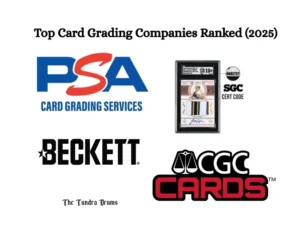Disclaimer: The information provided in this article is for general informational purposes only. It is not intended as professional advice. Please consult with qualified experts before making decisions related to supply chain management or related topics.
Supply chains have grown increasingly complex. With globalization, businesses now rely on a vast network of suppliers, logistics providers, and regulatory frameworks that constantly evolve. This expansion brings efficiency but also exposes companies to greater risks, including regulatory non-compliance, operational disruptions, and cybersecurity threats.
To assure stability and resilience, manufacturers must adopt structured approaches to risk management, compliance, and governance. Without a robust system in place, businesses may struggle to track supplier performance, adhere to industry standards, or respond effectively to unforeseen disruptions.
The Growing Complexity of Supply Chain Risks
Many companies are turning to GRC software solutions, which streamline compliance, mitigate risks, and enhance overall supply chain resilience. By integrating these tools, manufacturers can maintain better oversight, reduce vulnerabilities, and to make sure long-term sustainability in an unpredictable global market.
As supply chains expand across multiple regions, manufacturers face new challenges in maintaining efficiency, security, and compliance. The interconnected nature of global trade means that a single disruption, whether due to geopolitical shifts, regulatory changes, or supplier failures, can have widespread consequences.
One of the most pressing concerns is regulatory compliance. With different countries enforcing distinct trade policies, environmental regulations, and labor laws, businesses must navigate a constantly evolving legal landscape. Failing to meet these requirements can result in penalties, shipment delays, or damage to your reputation.
Cybersecurity threats have also intensified as manufacturers rely more on digital Logistics management tools. Data breaches, ransomware attacks, and compromised supplier networks can disrupt production and expose sensitive information, potentially compromising the security of critical systems. Without strong security measures, businesses risk financial losses and operational downtime.
How GRC Software Strengthens Supply Chain Management
Managing a supply chain involves constant oversight, as even minor inefficiencies or regulatory gaps can lead to significant disruptions. Governance, Risk, and Compliance (GRC) software plays a crucial role in addressing these challenges by integrating real-time monitoring, risk assessment, and automated reporting into supply chain operations.
One of its primary functions is identifying vulnerabilities before they escalate into significant issues. By continuously analyzing supplier data, contract adherence, and regulatory updates, GRC systems enable businesses to detect potential risks, such as non-compliance, operational inefficiencies, or security threats. This proactive approach allows manufacturers to take preventive action rather than reacting to crises after they occur.
Policy adherence is another critical aspect of Logistics management. This software assures that internal policies align with industry regulations, contractual agreements, and ethical sourcing requirements. This not only simplifies regulatory compliance but also minimizes financial and legal risks associated with violations.
Supplier audits, which traditionally require extensive manual effort, are also streamlined through automated documentation, real-time tracking, and performance benchmarking. By maintaining transparent records and audit trails, manufacturers can more efficiently evaluate supplier reliability and address potential compliance issues.
Key Benefits of GRC Software in Manufacturing
| Benefit | Description |
|---|---|
| Risk Mitigation | Identifies, assesses, and reduces operational, safety, and compliance risks. |
| Regulatory Compliance | Adherence to industry standards (e.g., OSHA, ISO, EPA). |
| Operational Efficiency | Automates audits, reporting, and incident tracking to save time and costs. |
| Improved Decision-Making | Provides real-time data and analytics for informed strategic choices. |
| Centralized Management | Unifies policies, controls, and risk processes across departments and sites. |
| Enhanced Transparency & Auditability | Maintains detailed logs and documentation for internal and external audits. |
1. Improved Risk Identification and Mitigation
Manufacturing Sourcing chains operate in unpredictable environments where disruptions can arise from supplier failures, geopolitical instability, or regulatory changes. Advanced AI-driven analytics integrated into Governance, Risk, and Compliance software help detect logistics management early warning signs, enabling companies to anticipate risks and take preventive action.
Non-compliance with industry regulations or contractual terms can result in financial penalties, shipment delays, or reputational damage. By providing automated monitoring and real-time alerts, GRC systems help manufacturers minimize exposure to financial losses resulting from supplier inconsistencies or non-compliance with legal requirements.
2. Streamlined Regulatory Compliance
Manufacturing companies must adhere to ISO, FDA, and other regulatory standards, which often involve extensive documentation, periodic audits, and strict reporting guidelines. Governance, Risk, and Compliance software automates compliance tracking, ensuring that businesses stay aligned with evolving industry standards without manual intervention.
Audit trails play a crucial role in proving compliance during inspections. A well-structured GRC system maintains detailed records of supplier certifications, internal risk assessments, and policy updates, ensuring transparency and reducing the risk of compliance violations.
External Link Suggestion: Insert a link on “ISO compliance standards” to an authoritative source, such as an official regulatory body or industry research site.
3. Enhanced Supplier Performance and Accountability
Managing a diverse supplier network requires continuous evaluation of reliability, contract fulfillment, and ethical sourcing practices. Governance, Risk, and Compliance software provides a centralized framework for evaluating supplier performance against predefined benchmarks, allowing manufacturers to identify and address weaknesses in their Sourcing chains.
Additionally, as businesses prioritize Environmental, Social, and Governance (ESG) goals, GRC tools help align suppliers with sustainability and ethical sourcing policies. This strengthens corporate responsibility efforts while mitigating risks related to non-compliant or unethical supplier practices. This strengthens corporate responsibility efforts while mitigating risks related to non-compliant or unethical supplier practices.
4. Data Security and Cyber Risk Management
With increasing reliance on digital supply chain systems, cybersecurity threats have become a major concern for manufacturers. Data breaches, ransomware attacks, and compromised supplier networks can disrupt operations and result in substantial financial losses.
Governance, Risk, and Compliance software integrates cybersecurity frameworks to enhance data protection, access controls, and threat detection mechanisms. By ensuring compliance with security protocols and providing real-time risk monitoring, manufacturers can safeguard sensitive supply chain data and minimize vulnerabilities in their digital infrastructure.
By leveraging GRC solutions, manufacturing companies can establish a resilient, transparent, and risk-aware supply chain, ensuring stability in an evolving business environment.
The Future of GRC in Manufacturing Supply Chains
As logistic supply chains evolve, emerging technologies are reshaping how risks are managed, compliance is enforced, and operational decisions are made. Manufacturers are increasingly integrating AI-driven risk modeling, blockchain technology, and predictive analytics to enhance supply chain transparency and resilience.
AI-driven risk modeling allows businesses to analyze vast datasets, identify patterns of potential disruptions, and take proactive measures to mitigate risks. By leveraging machine learning, manufacturers can predict supplier delays, regulatory changes, and market fluctuations before they impact operations.
Blockchain technology is also gaining traction in Logistics management due to its ability to enhance transparency and traceability. By recording every transaction and supplier interaction on an immutable ledger, companies can verify compliance with industry standards, prevent fraud, and establish ethical sourcing practices. Blockchain technology is also gaining traction in Logistics management due to its ability to enhance transparency and traceability. By recording every transaction and supplier interaction on an immutable ledger, companies can verify compliance with industry standards, prevent fraud, and establish ethical sourcing practices.
Conclusion
In today’s increasingly complex manufacturing landscape, managing supply chain risks, ensuring compliance, and maintaining operational efficiency requires a structured approach. With global logistics chains facing regulatory shifts, cybersecurity threats, and financial uncertainties, businesses must adopt strategies that enhance transparency and resilience.
Software plays a critical role in addressing these challenges by providing real-time risk assessment, automated compliance tracking, and improved supplier accountability. By integrating these tools, manufacturers can identify potential disruptions early, streamline regulatory processes, and reduce human errors that could lead to financial or operational setbacks.
As logistic chains continue to evolve, companies that implement advanced GRC frameworks will be better equipped to adapt to new regulations, mitigate emerging risks, and verify long-term stability. A proactive approach to governance, risk, and compliance is no longer optional. It is essential for building a secure, efficient, and future-ready supply chain.
FAQs
1. How does GRC software help in supply chain management?
A governance and compliance solution helps by automating compliance tracking, identifying risks, and enhancing supplier accountability. It assures regulatory adherence, enhances cybersecurity, and streamlines audit processes for smoother supply chain operations.
2. What are the key risks in manufacturing supply chains that software can address?
This software mitigates risks like regulatory non-compliance, financial losses, supplier failures, cybersecurity threats, and operational disruptions by providing real-time monitoring and automated risk assessments.
3. Is GRC software necessary for small and mid-sized manufacturing companies?
Yes, even smaller manufacturing firms benefit from this software as it helps manage compliance, reduce risks, and improve operational efficiency, ultimately leading to cost savings and enhanced business resilience.









